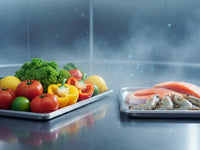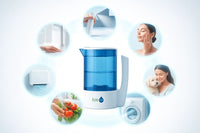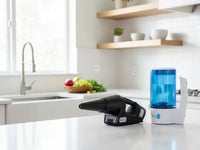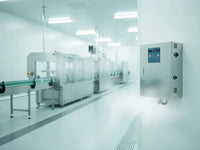How Long Does COVID-19 Last on a Surface?
Practicable Personal Hygiene At Home
-
Making it a habit of washing your hands with soap and water for at least 20 seconds each time you come in contact with any surface or return from outdoors.
-
A recently infected person will not show obvious signs and symptoms of an infection until the appropriate viral incubation period; you therefore cannot physically tell who is infected or not at an early stage. Wearing a face mask when interacting with others to prevent infection is a recommended best practice
-
Wearing disposable latex gloves to protect your hands as you take public transport or interact with the external environment.
-
Avoiding touching the face without first sanitizing your hands to prevent infection.
Difference Between Cleaning and Disinfecting
Home Disinfecting Product Ingredients
There are some solutions that help disinfect the surface, but do not fully get rid of the Covid-19 virus. Commercially-available surface disinfectants may typically contain the following active ingredients:
- 60 – 90% Ethanol Alcohol: This is a clear and colorless alcohol that is a common ingredient used in the manufacture of hand sanitizers. It serves as both a cleaning and disinfecting agent for homes. It is known to kill many bacteria and viruses due to its antimicrobial properties. It works by breaking down the protein structure of bacteria. Research has shown that ethanol works better when mixed with water. This can be used in sanitizers and surface disinfectant sprays in the house. The human skin may suffer mild dryness from its use.
- Hydrogen Peroxide: Frequent use of hydrogen peroxide, as a disinfecting ingredient, has been shown to protect homes against the Covid-19 virus. It is one ingredient considered quite safe, readily available in the market, and less expensive than other available alternatives. Hydrogen peroxide is trusted to help protect vulnerable members of the family against the virus. It can be used as a mouthwash and sprayed around the house. Experts advise against breathing in hydrogen peroxide as it has dangerous adverse effects on humans.
- 60 – 90 Isopropyl alcohol: Isopropyl alcohol works as a good disinfectant ingredient to prevent Covid-19 by killing germs, dissolving lipids, and breaking down their proteins. It has been proven that higher levels of Isopropyl alcohol in a disinfectant (e.g. 90% versus 70%), is less effective at killing viruses and bacteria. A diluted Isopropyl alcohol works better than a fully concentrated one.
- Quaternary Ammonium: This is a disinfecting ingredient found in products used in hospitals, homes, daycare centers, restaurants, and many other communal settings. Although certified as a pesticide, it has been added to disinfectants because it is highly effective at fighting fungi and viruses.
- Hypochlorous Acid: Hypochlorous Acid is a disinfecting ingredient with a weak acid similar to a mild citrus juice, but is 80 times more effective than chlorine bleach. It carries no electric charge, like bleach does, which further helps to deactivate and destroy the virus. It moves very quickly, oxidizing the bacteria and the virus in seconds. Otherwise known as HOCl, it is certified 100% safe and causes no skin irritation. It is electronically generated and can serve as a spray for the home to be used for wiping surfaces clean.
Places To Regularly Disinfected at Home
The stress of how to disinfect your house after Covid can be hectic, especially if you are unsure what to focus on. Some places in your home are hot spots for the virus; and those should take priority when it’s time to disinfect.
- Faucets
- Appliances (Refrigerator, oven, microwave, and dishwasher)
- Cupboards and Door knobs/handles
- Bathroom and Kitchen Counters
- Computer Keyboards
- Mobile devices
- Switches
- Tables and chairs
- Remotes and Game controllers.
- Staircase railings
- Toilet seats and handles
Other Uses of Hypochlorous Acid
- Food Produce
- Meat
- Furniture
- Surgical/Medical Equipment
- Livestock
- Water
- Seafood
- Poultry
- Household furniture and fittings
- Toilets and bathrooms, among others.





